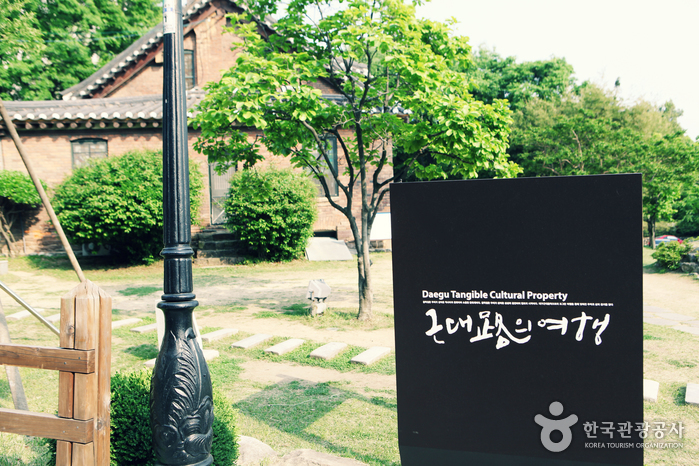BL plastic syrgery clinic (비엘성형외과의원)
15.4Km 2025-10-23
(1st-3rd and 11th-13th Floors), 95 Dongseong-ro 2-gil, Jung-gu, Daegu
BL Plastic Surgery Clinic offers a comprehensive range of treatments and surgeries led by a team of highly skilled specialists in plastic surgery, dermatology, and anesthesiology, each with years of experience and numerous successful cases.
We offer one-on-one consultations to balance the patient's preferences with the medical team’s professional recommendations. To assess surgical eligibility, we use diagnostic equipment with the lowest radiation exposure. Additionally, our facility is equipped with advanced cosmetic skin treatment devices and employs a clean room system to minimize infection risks.
We have dedicated coordinators fluent in English, Chinese, Japanese, Russian, Vietnamese, Thai, and Khmer for our international patients. Our overseas medical center offers detailed and secure care through personalized consultations with coordinators from their home countries.
Daegu Modern History Streets (Tour of Modern Streets) (대구 근대골목(근대로의 여행))
15.5Km 2023-10-27
66, Gukchaebosang-ro 102-gil, Jung-gu, Daegu
+82-53-661-3327
Daegu Modern History Streets is an experiential tour that brings the participants across Daegu’s alleyways and living history. During the Korean War, Daegu was much less damaged than other regions. Because of that, the city retains the changes in lifestyles before and after the war relatively well.
There are 13 courses in total, run by regional self-governance groups in Daegu, defined according to different themes and areas. The most popular among them is Course 2, the Modern Cultural Street, which takes visitors on a tour of major sites associated with Daegu’s modernity. Follow the retro aesthetics and the history of Daegu and Korea along places like Kyesan Catholic Church, Jeil Church, old houses, and the former Chinese Elementary School.
Note that multilingual tours are offered to international visitors in English, Japanese, and Chinese, in regular tours (14:00 every Saturday) and on-demand tours (available for groups of more than 5). Reservations are offered on the official website.
Luxe - Daehyun Primall Daegu Branch [Tax Refund Shop] (룩스 대현프리몰대구 [사후면세점])
15.5Km 2024-04-23
147, Gijanghaean-ro, Gijang-eup, Gijang-gun, Busan
-
Pax Music [Tax Refund Shop] (팍스뮤직)
15.5Km 2024-04-22
Store# B-5, B-6, B580 Gukchaebosang-ro, Jung-gu, Daegu
-
Eunhye Cosmetics - Daehyun Primall Daegu Branch [Tax Refund Shop] (은혜화장품 대현프리몰대구)
15.5Km 2024-04-19
F11-11, B580 Gukchaebosang-ro, Jung-gu, Daegu
-
Dorosi - Daehyun Primall Daegu Branch [Tax Refund Shop] (도로시 대현프리몰대구)
15.5Km 2024-04-19
B580 Gukchaebosang-ro, Jung-gu, Daegu
-
Ace - Daehyun Primall Daegu Branch [Tax Refund Shop] (에이스 대현프리몰대구)
15.5Km 2024-04-27
B580 Gukchaebosang-ro, Jung-gu, Daegu
-
Bottari - Daehyun Primall Daegu Branch [Tax Refund Shop] (보따리 대현프리몰대구)
15.5Km 2024-04-19
B580 Gukchaebosang-ro, Jung-gu, Daegu
-
Daegu Art Factory (대구예술발전소)
15.5Km 2025-08-11
31-12 Dalseong-ro 22-gil, Jung-gu, Daegu
Daegu Art Factory is housed in an old tobacco plant, renovated into a space for art and culture. It hosts various exhibitions dedicated to Korean and international artists. Some of these include exhibitions dedicated to Daegu’s modernity, works of young artists, experimental projects, AI-based exhibitions, seminars, and art lectures. Through these exhibitions, Daegu Art Factory is cementing its status as an important platform for art exchange in Daegu. There’s also a space for families (children’s book reading room) for greater accessibility.


![Pax Music [Tax Refund Shop] (팍스뮤직)](http://tong.visitkorea.or.kr/cms/resource/40/2883940_image2_1.jpg)
![Eunhye Cosmetics - Daehyun Primall Daegu Branch [Tax Refund Shop] (은혜화장품 대현프리몰대구)](http://tong.visitkorea.or.kr/cms/resource/47/2883947_image2_1.jpg)
 English
English
 한국어
한국어 日本語
日本語 中文(简体)
中文(简体) Deutsch
Deutsch Français
Français Español
Español Русский
Русский